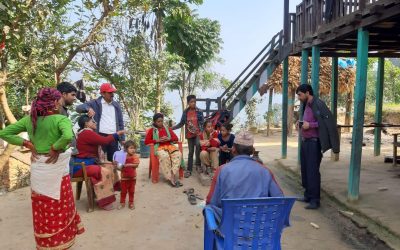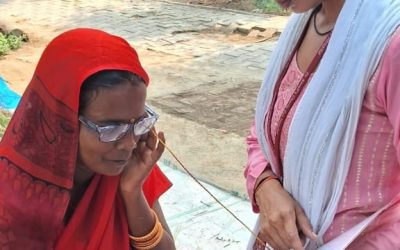Iceh News
One million participants included in RAAB surveys
A RAAB in progress. Photograph: Aravind Eye Hospitals The Rapid Assessment of Avoidable Blindness (RAAB) has reached one million participants surveyed since 2000. RAAB is the main tool used for estimates of sight loss worldwide....
Digital App Performs As Well as Conventional Charts for Near Vision
Near vision testing in India Photograph: Mohd Javed A new study from India shows that a smartphone-based near vision test can be used reliably by trained community screeners, offering a rapid and accurate alternative to conventional near-vision charts. Conducted in...
Translating Research into Intervention: Developing a Face Washing Programme to Help Eliminate Trachoma
Face washing as part of the Stronger-SAFE events. © Zacharias Abubeker Trachoma is the world’s leading infectious cause of blindness, affecting over 100 million people globally. Repeated infections with the bacterium Chlamydia trachomatis cause scarring that turns the...
Africa Public Eye Health & Clinical Fellows Announced
This year's cohort of African Public Eye Health & Clinical Fellows have been announced. The programme, a joint initiative between the International Centre for Eye Health at the London School of Hygiene & Tropical Medicine and the Fred Hollows Foundation, aims...
ICEH welcomes new Academic Clinical Fellow
Each year, the National Institute for Health and Care Research (NIHR) facilities a programme of Academic Clinical Fellowships (ACF), a clinical specialty training post in medicine that incorporates academic training. Fellows spend 25% of their time in research...
ICEH PhD Students: The Next Generation of Research
At the International Centre for Eye Health we have a proud history of developing research careers globally. Since 2010 we have had 28 research degree students who have been awarded their PhDs, and 16 of these are nationals of low and middle-income countries (LMICs)....
One third of people blind from cataract ‘do not feel need’ for surgery in Nepal
Cataract surgery is a highly cost-effective public health initiative, addressing the main cause of avoidable blindness. Nepal has a comparatively high rate of sight loss globally, with 6.7m people experiencing some form of sight loss, and 65% of this due to cataract....
Adaptive Trials Could Lead to Improvements in Health Service Quality
Quality improvement (QI) aims to enhance the quality and delivery of health care through incremental changes. Examples of QI include introducing simple, low-risk initiatives like financial incentives and reminders to improve attendance at appointments or adherence to...
Professor Fatima Kyari Appointed IAPB Africa Chair
Fatima Kyari, Associate Professor at the International Centre for Eye Health and a distinguished Nigerian ophthalmologist and ophthalmic epidemiologist, has been appointed as the Africa Region Chair for the International Agency for the Prevention of Blindness (IAPB)....









